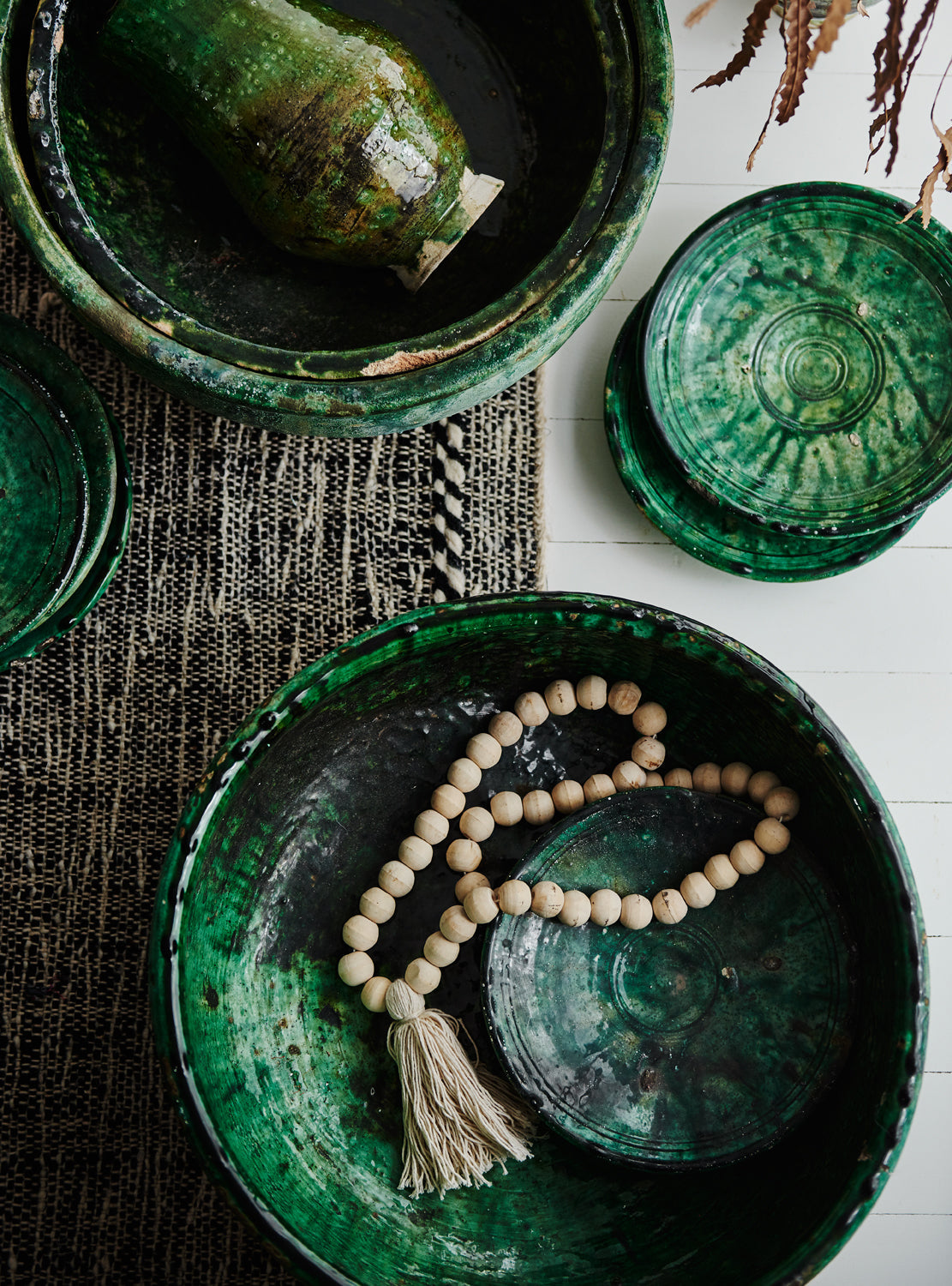Just on the cusp of the Sahara Desert lies Tamegroute, a small village with a rich and vibrant history. Wanting to raise the status of the village into that of a city, the founders assembled craftsman who specialised in pottery. Still a village today, Tamegroute is the home to seven Atelier families who each own one oven and their own atelier. Creating pottery in a signature green shade the craftsmanship and skill is beautifully authentic to the region. The pottery has become its main characteristic. Except for a few ochre shades, a green glaze is the dominant colour in pottery from Tamegroute.
Tamegroute pottery is a work of art. With a unique crafting process that has been passed down from generation to generation. The artisans source all their raw materials from nature. Clay is collected from nearby palm groves by digging deep holes in the ground up to ten meters deep. Palm tree branches are mostly used as fuel for the stove, although tamarisk and eucalyptus chips left over from local carpenters are sometimes added. This process begins at the River Draa where potters dig up the clay and then spin and shape the clay into unique bowls, mugs and serving platters.

The pottery is then hand dipped into the glazing mixture giving the pottery its distinctive green colour. Once this process is complete the pottery is baked in one of the seven ovens in Tamegroute at a high temperature. If you stood just outside of the village the dark distinctive smoke from these ovens can be seen from afar. The unique process is like no other and each piece produced bares its own marks, patterns and traits.
The signature green glaze contains a high proportion of manganese, silica, cobalt, a hint of copper, barley flour, and a particular type of rock found in local mines a few hundred kilometres away. The concoction is mixed with water in a huge basin and left to thicken for about a week. But it’s the firing process that is thought to be key to the multi-shade green colour that has yet to be replicated elsewhere. It is believed that one day the original green pottery will be worth a fortune.




Leave a comment